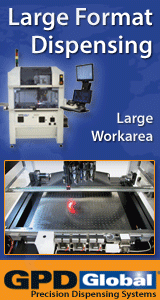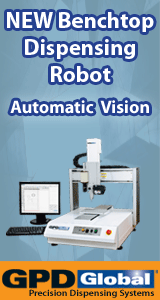Printed Circuit Board Assembly & PCB Design Forum
SMT electronics assembly manufacturing forum.
- SMTnet
- »
- Electronics Forum
- »
- Soldering problem with Au plating PCB
Soldering problem with Au plating PCB
Views: 7857
![]() Hello All,
I have a problem with nonwetting Au finish aft...
- Jan 25, 2009
by
peterc
Hello All,
I have a problem with nonwetting Au finish aft...
- Jan 25, 2009
by
peterc
![]()
![]()
![]() This one might help
...
- Jan 26, 2009
by
emil
This one might help
...
- Jan 26, 2009
by
emil
![]()
![]()
![]() We've had this same problem with the solder wicking to the c...
- Jan 26, 2009
by
robgd3
We've had this same problem with the solder wicking to the c...
- Jan 26, 2009
by
robgd3
![]()
![]()
![]() > Hello All,
>
> I have a problem with nonwettin...
- Feb 03, 2009
by
peterc
> Hello All,
>
> I have a problem with nonwettin...
- Feb 03, 2009
by
peterc
![]()
![]()
![]() Hi Peter,
The defect you observe during the second side ref...
- Feb 04, 2009
by
sachu_70
Hi Peter,
The defect you observe during the second side ref...
- Feb 04, 2009
by
sachu_70
![]()
![]()
![]() Hi Sachin,
thanks for your feedback.
According to our su...
- Feb 09, 2009
by
peterc
Hi Sachin,
thanks for your feedback.
According to our su...
- Feb 09, 2009
by
peterc
![]()
![]()
![]() Look here ...
- Feb 09, 2009
by
davef
Look here ...
- Feb 09, 2009
by
davef
![]()
![]()
![]() Hi all
We also met the solder nonwetting problem as belo...
- Mar 30, 2009
by
Jeong Ju-young
Hi all
We also met the solder nonwetting problem as belo...
- Mar 30, 2009
by
Jeong Ju-young
![]()
![]()
![]() Is this a sample board that you ran without components?
I...
- Mar 30, 2009
by
robgd3
Is this a sample board that you ran without components?
I...
- Mar 30, 2009
by
robgd3
![]()
![]()
![]() Thanks for your answer.
For your question, this problem f...
- Mar 30, 2009
by
Jeong Ju-young
Thanks for your answer.
For your question, this problem f...
- Mar 30, 2009
by
Jeong Ju-young
![]()
![]()
![]() Hello,
we had similar problem in the past - when we had to ...
- Mar 31, 2009
by
d0min0
Hello,
we had similar problem in the past - when we had to ...
- Mar 31, 2009
by
d0min0
![]()
![]()
![]() Hi Peter,
Have the plating thickness checked with XRF. If...
- Apr 02, 2009
by
Vlad
Hi Peter,
Have the plating thickness checked with XRF. If...
- Apr 02, 2009
by
Vlad
![]()
![]()
![]() Jeong Ju-young
You touched them all up with an iron? Wow!
...
- Apr 06, 2009
by
C111
Jeong Ju-young
You touched them all up with an iron? Wow!
...
- Apr 06, 2009
by
C111
![]()
- SMTnet
- »
- Electronics Forum
- »
- Soldering problem with Au plating PCB







